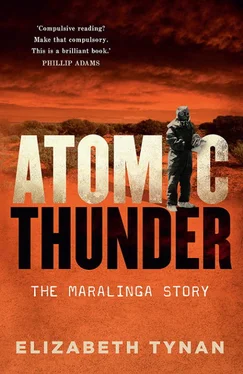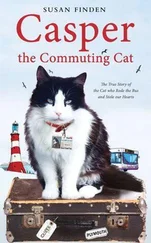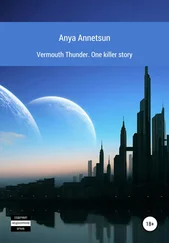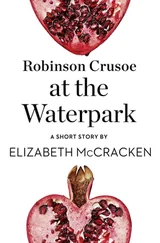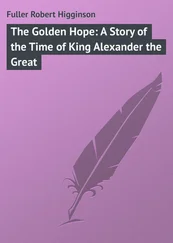One of the main roles of the AWTSC was to establish a network of monitoring stations around Australia, and eventually 60 stations were created, including in all state and territory capitals. However, their efficacy is open to debate. The safety committee oversaw an almost comical array of sticky paper that didn’t work when it rained, air pumps that measured airborne contamination but were regularly clogged by dust, battery-powered dosimeters with batteries that were usually dead, and other totally ineffectual methods for detecting and measuring radioactivity. Even for the times, these methods were inadequate. The 1984 Kerr Report on the aftermath of the British tests found that the ‘wearing of film badges (dosimeters) was so erratic and, in some cases, the measuring of doses so arbitrary, that… little weight can be placed on the validity of records as an index of long-term dose commitment’. The report noted, too, that when Mosaic G2 was about to be detonated, the AWRE supplied the AWTSC with 50 sets of fallout deposition monitoring equipment, but they deployed only 28 sets. Whether this was due to lack of time or lack of interest was not noted. The AWTSC also used aerial surveys by low-flying planes to obtain fallout measurements. The Royal Commission found that these readings would have to be multiplied by 10 to accurately reflect the contamination on the ground. But, as author Joan Smith wrote, ‘the Atomic Weapons Tests Safety Committee used the actual readings to give assurances to the public about the level of fallout from the tests’. Exactly why is unclear. It’s likely they did not want to upset the British or fuel public fears. They were also not in possession of all the information that the British had.
Once the stresses of the highly problematic Mosaic series were out of the way, the safety committee turned its attention to Maralinga, which was just about to become operational. Kittens tests were already underway there, and these notionally fell under the remit of the AWTSC, although, as previously noted, the committee was not really interested in the minor trials. Again, meteorological conditions were discussed at the committee meetings, especially the perennial problem of winds. In the 1950s, there were no satellites to assist in predicting weather. If meteorology is an inexact science now, it was far more so then. Would the swirling air currents send fallout to populated areas, with incalculable risks both physical and political? The AWTSC came up with guidelines to avoid this, largely by limiting the yield of bombs tested at Maralinga to no more than 10 kilotonnes and ensuring that the most precise meteorological calculations possible were made. The British test authorities did not heed any of these recommendations. The committee was also concerned about the presence of Aboriginal people in the area, and the fact that their lifestyle made it more likely that they would be affected by fallout and contamination. At the Royal Commission, William Penney claimed he had been unaware of such concerns.
When Operation Antler, the final major bomb trial at Maralinga, was in its planning stage, there was a fundamental change in the AWTSC. The committee was reduced to three, and Titterton became its chair. The role changed too. The committee was now required to report to the prime minister only on the safety of the weapons tests. A new body, the National Radiation Advisory Committee, took on the task of examining radiation safety in the community. That committee had a broad responsibility to advise the government on all matters concerning ionising radiation in the community, including fallout from the atomic weapons test programs of other countries and not just those related to the British nuclear tests. The chair was the distinguished Australian scientist Sir Macfarlane Burnet, who was joined by Leslie Martin and Alan Butement from the old AWTSC. This new committee had been created on Martin’s advice. As defence scientific adviser, he was acutely aware of a backlash that could not be ignored caused by the swift rise in the world’s nuclear weapons arsenal and the testing by three nations. Atmospheric nuclear tests sent radioactive elements high into the upper atmosphere and stratosphere, with who knew what long-term effect. The advisory committee was intended to provide advice on how the Australian community might be affected.
The ascension of Titterton to the head of the safety committee was a welcome development for the British, particularly during the trickier than usual negotiations for Operation Antler. The AWRE wished to deal only with Titterton, who held talks with senior AWRE staff when he visited the UK in March 1957. According to the Royal Commission, he was given details about Antler during this visit that he did not share with the Australian Government.
A typical example of the way that Titterton operated can be seen in the case of cobalt-60. As the 1950s wore on and atomic weaponry started to become a source of considerable public anxiety, rumours often gained legitimacy. The idea of a cobalt bomb – created by adding cobalt to a nuclear weapon, a process known as salting – began in 1950 when the physicist Leo Szilard postulated it as a hypothetical ‘doomsday device’ that would wipe out all human life. The addition of cobalt would increase the amount of radioactive fallout produced by the weapon, making it more deadly. It didn’t actually exist, but the prospect caused some disquiet. Titterton addressed this issue in one of the articles he published in the Australian press during the test series. There was no cobalt bomb on the British drawing board, but, all the same, cobalt later featured in the severe criticism of Titterton during the Royal Commission.
The first Antler bomb at Maralinga in 1957 contained a radio-active cobalt isotope, cobalt-60. Titterton knew this extremely dangerous substance was going to be used but did not tell the Australian officials at the site. Doug Rickard, an 18-year-old technician who was monitoring fallout for the Commonwealth X-Ray and Radium Laboratory, found small pellets of the highly radioactive substance on his routine patrol at the Tadje site after the first Antler test. He scooped some of the pellets into a tobacco tin. The tobacco tin was so radioactive that the radiation readings were off the scale. The Australian health physics representative Harry Turner reported this to the British authorities, who acted to lock down the information. During the Royal Commission, Titterton claimed that he had deliberately concealed information about the use of cobalt as a ‘test’ for Turner and his health physics team. Jim McClelland’s scorn comes through in the transcript. He accused Titterton outright of being a liar.
The cobalt was used during the Antler Tadje test to detect the amount of energy released at the time of the explosion, although it failed in this purpose. In fact, the substance was simply sprayed out from ground zero and fell as pellets all around the test site. Doug Rickard was not meant to discover it. Titterton was, of course, party to the information, but no-one else on the Australian side was supposed to be. According to a top-secret memorandum from Charles Adams to Admiral Brooking back at Aldermaston, ‘With some difficulty I obtained permission from the Director to inform Titterton (as Chairman of the Safety Committee) that we intended to use such an indicator. Titterton was entirely sympathetic, raised no difficulties, realised that we were not adding any real hazard, and agreed that the information should go no further on the Australian side’. By informing Titterton, the British could claim that they had done their duty to the Australians, as they did at the Royal Commission, while knowing that he would not pass anything on.
The AWRE brass were concerned about Turner spreading the cobalt information, and a secret memorandum recorded, ‘It appears that Turner has reported to [range commander] Dick Durance in addition to reporting here. In doing so I think Turner has misconstrued his terms of reference which were to report in the first instance to A.W.R.E.’ Adams indicated that he was urgently trying to contact Titterton. ‘If it is necessary to correspond with the Australian Department of Supply or the Range Commander, I should much prefer to do so in terms agreed with Titterton, rather than write indepdently [ sic ].’ In the end, a huge number of cobalt-60 fragments were encased in lead and buried at the airfield, the place where many problems were buried out of sight.
Читать дальше
